Spatial
Te Kāhui Toi 3 Te Rau Karamu Marae, Massey University
-
Pou Auaha / Creative Director
Te Kahui Toi
-
Ringatoi Matua / Design Director
Te Kahui Toi
-
Ngā Kaimahi / Team Members
Ngataihururu Taepa, Kura Puke, Hemi Macgregor, Saffronn Te Ratana, Stuart Foster, Israel Birch -
Kaitautoko / Contributors
Ari Stevens, Troy Martin, Stan Rerekura, Graeme McKinstry -
Client
Te Rau Karamu, Puke Ahu, Massey University
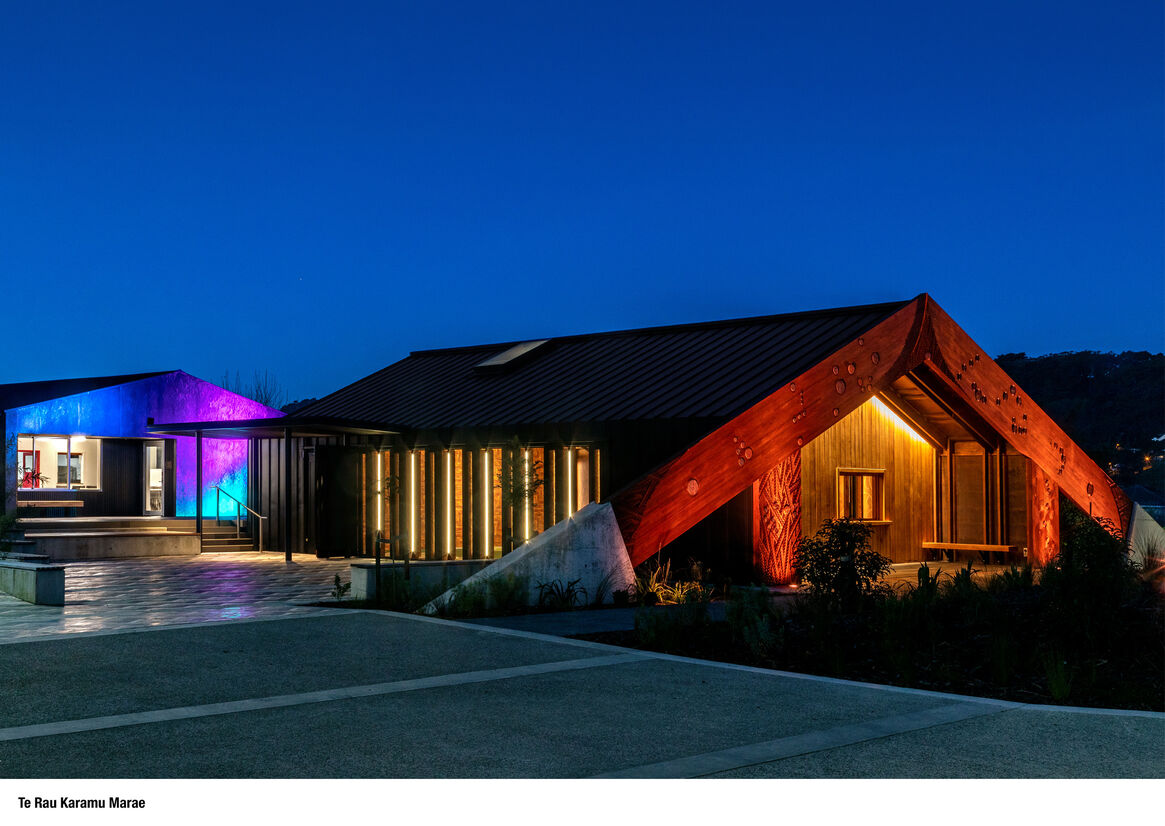
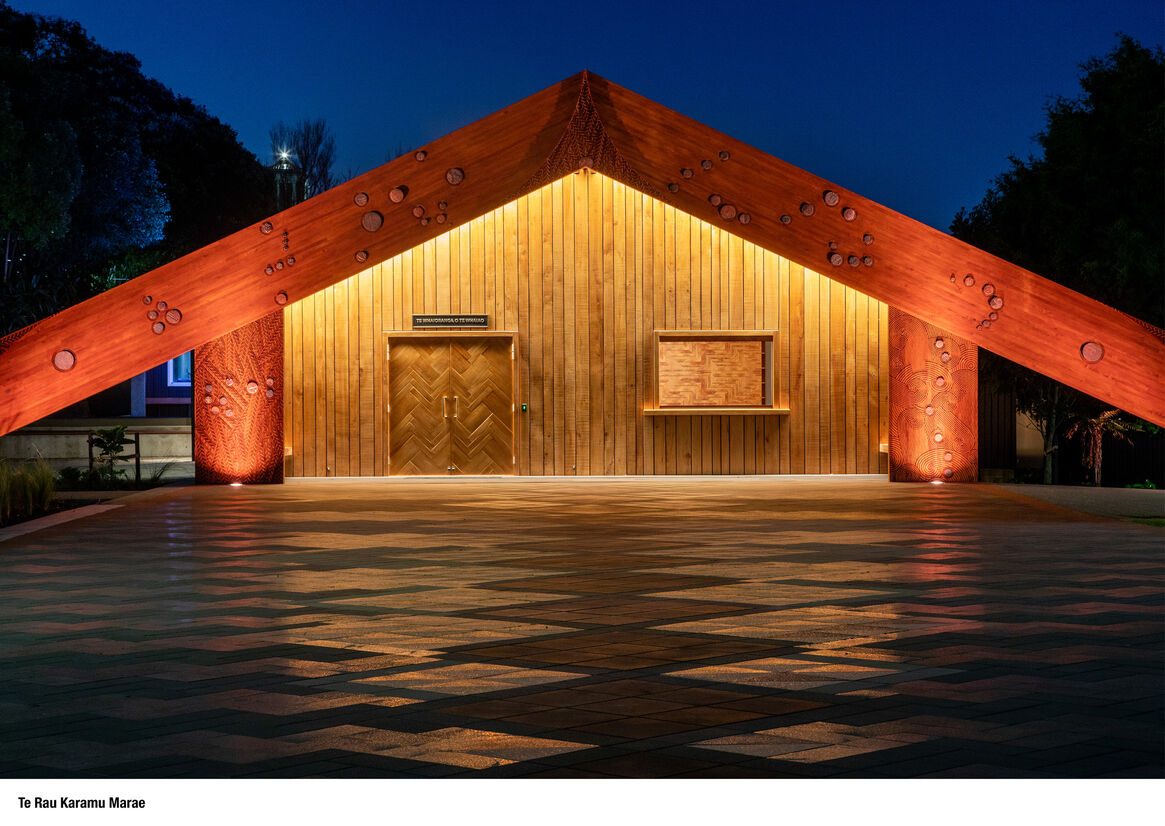
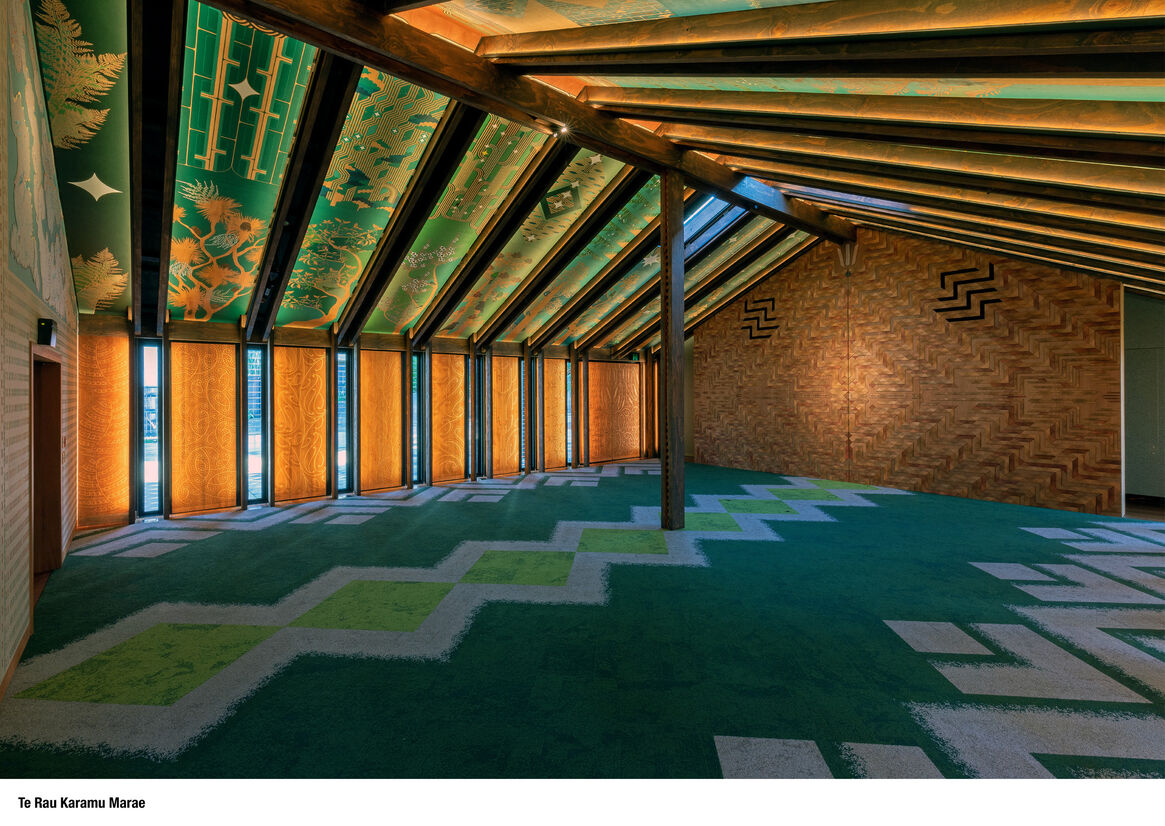
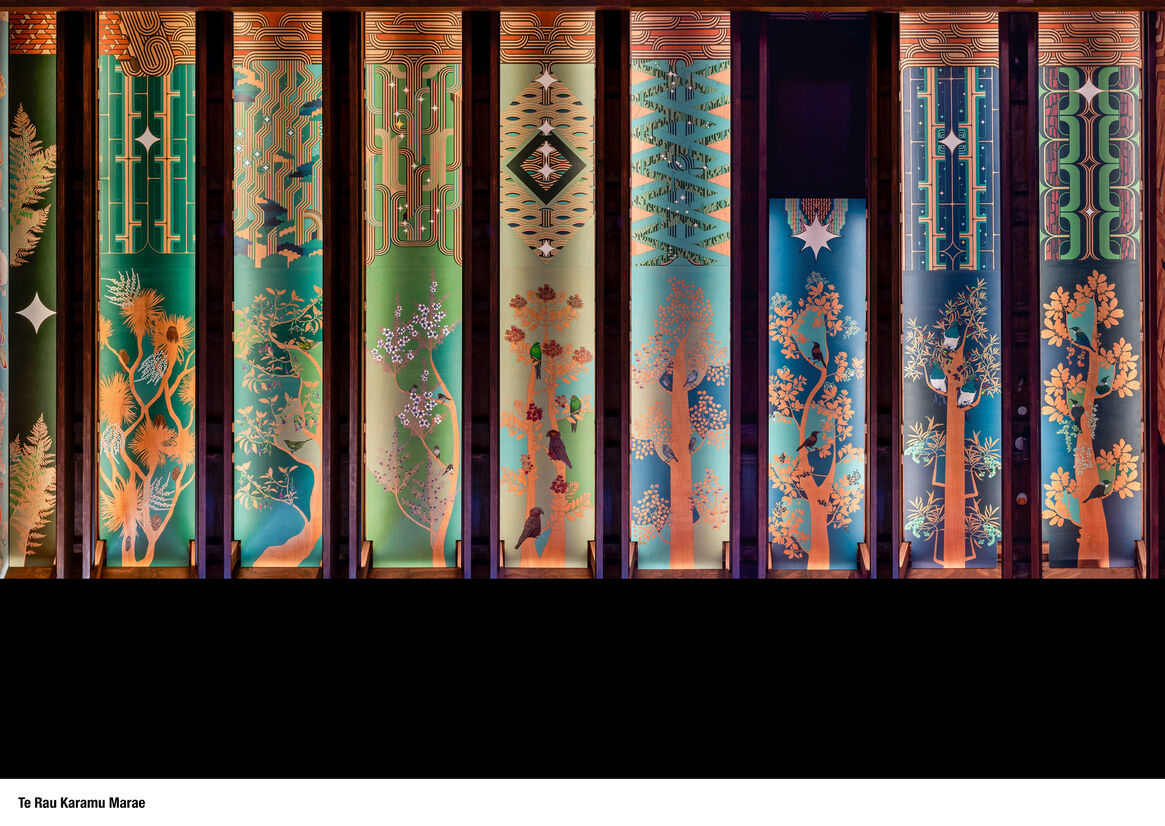
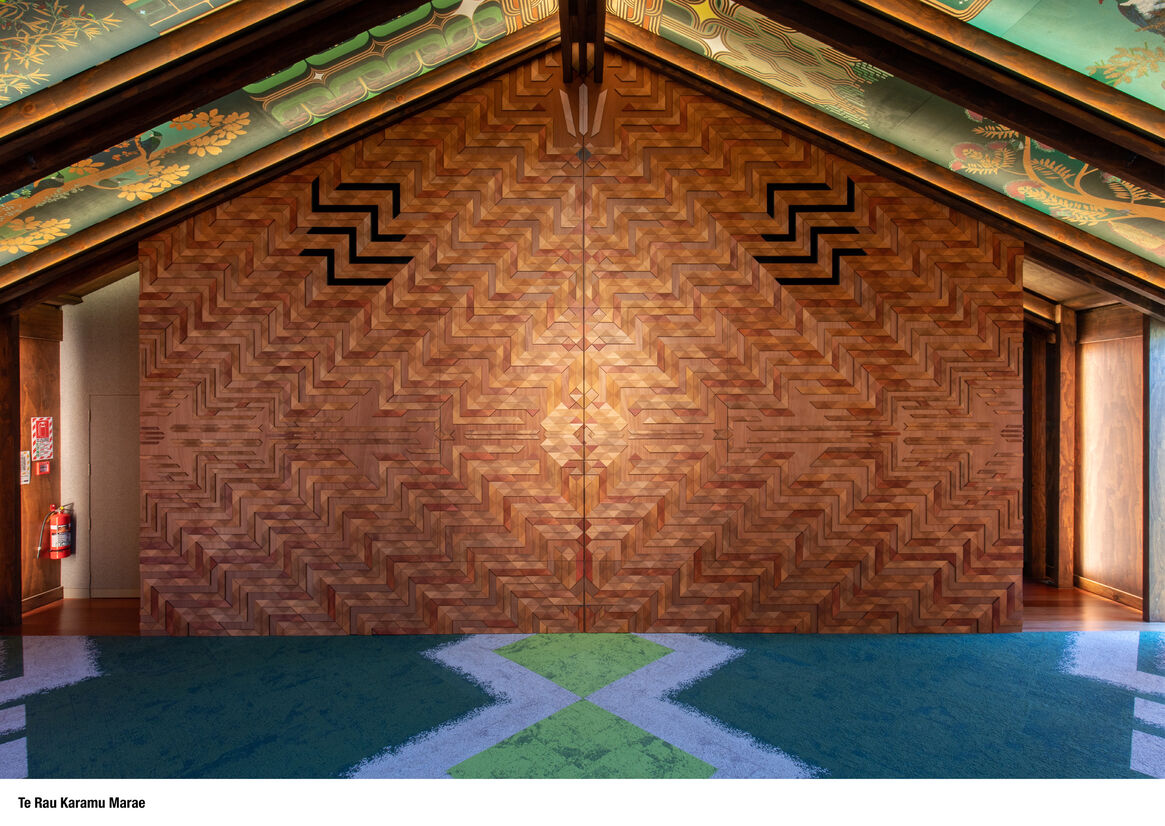
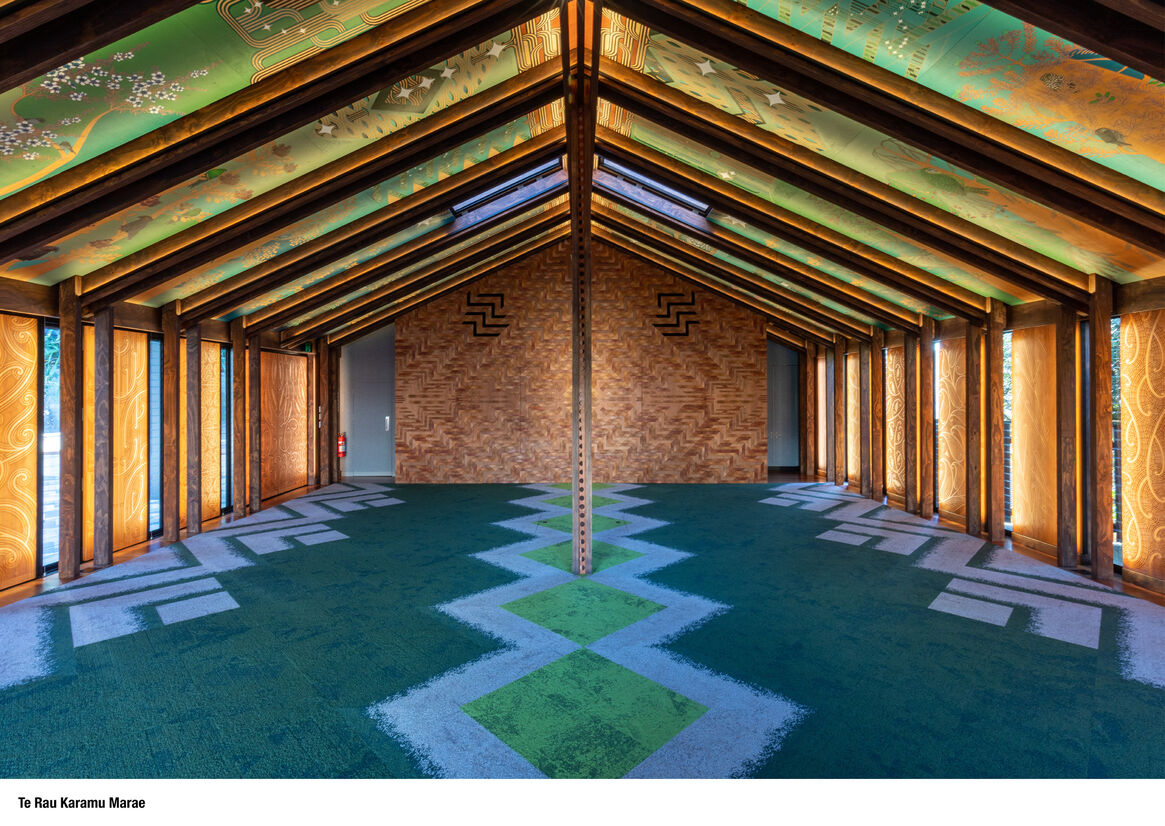
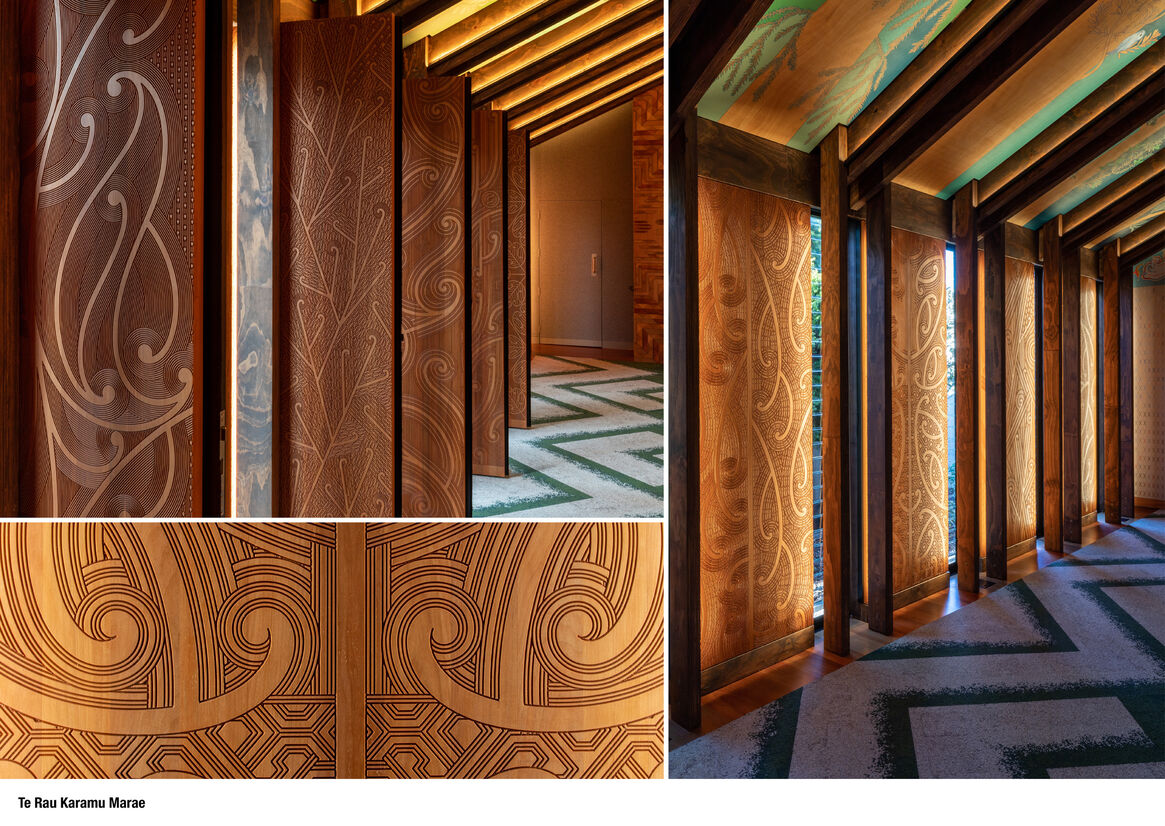
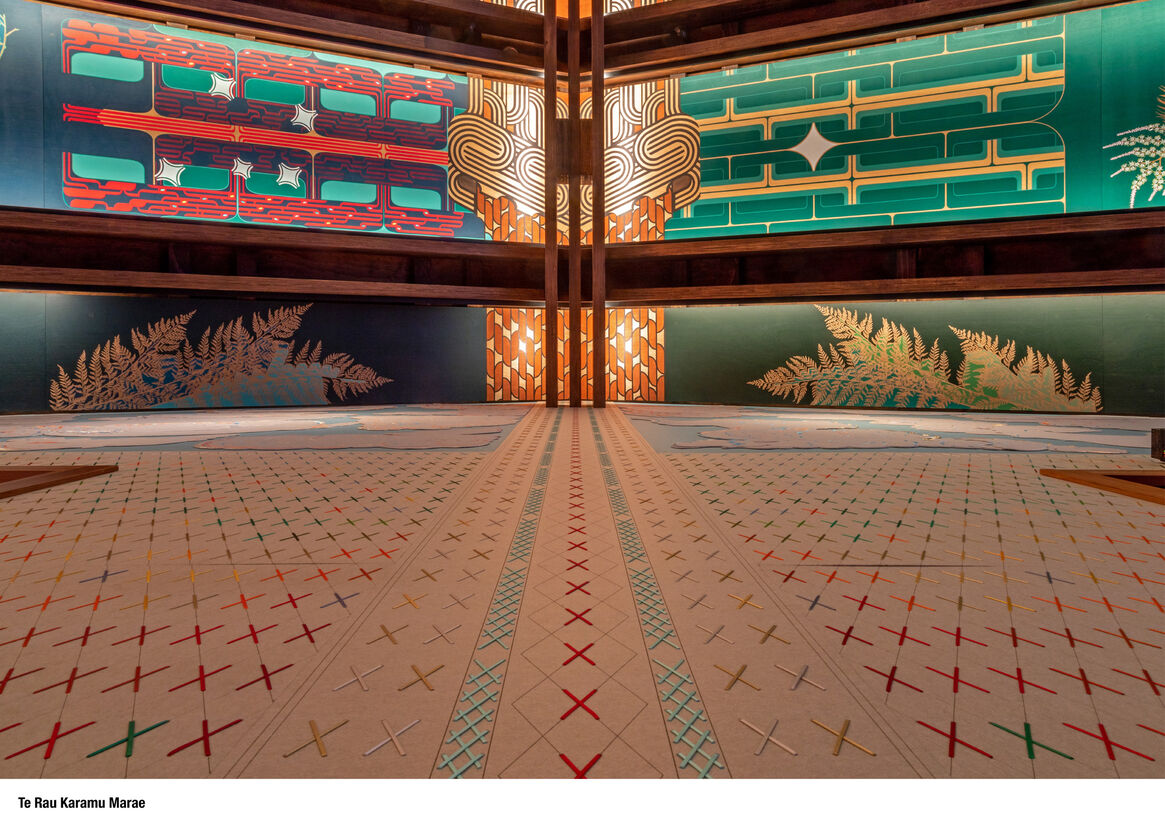
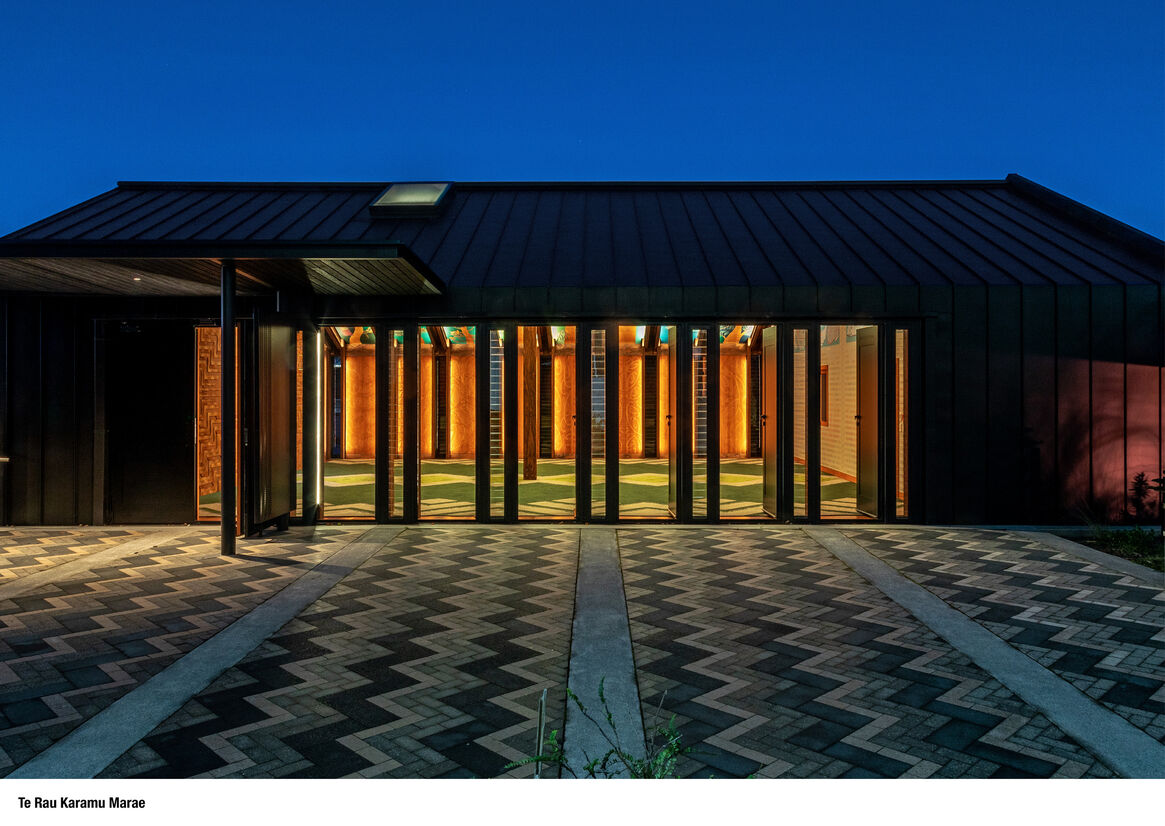
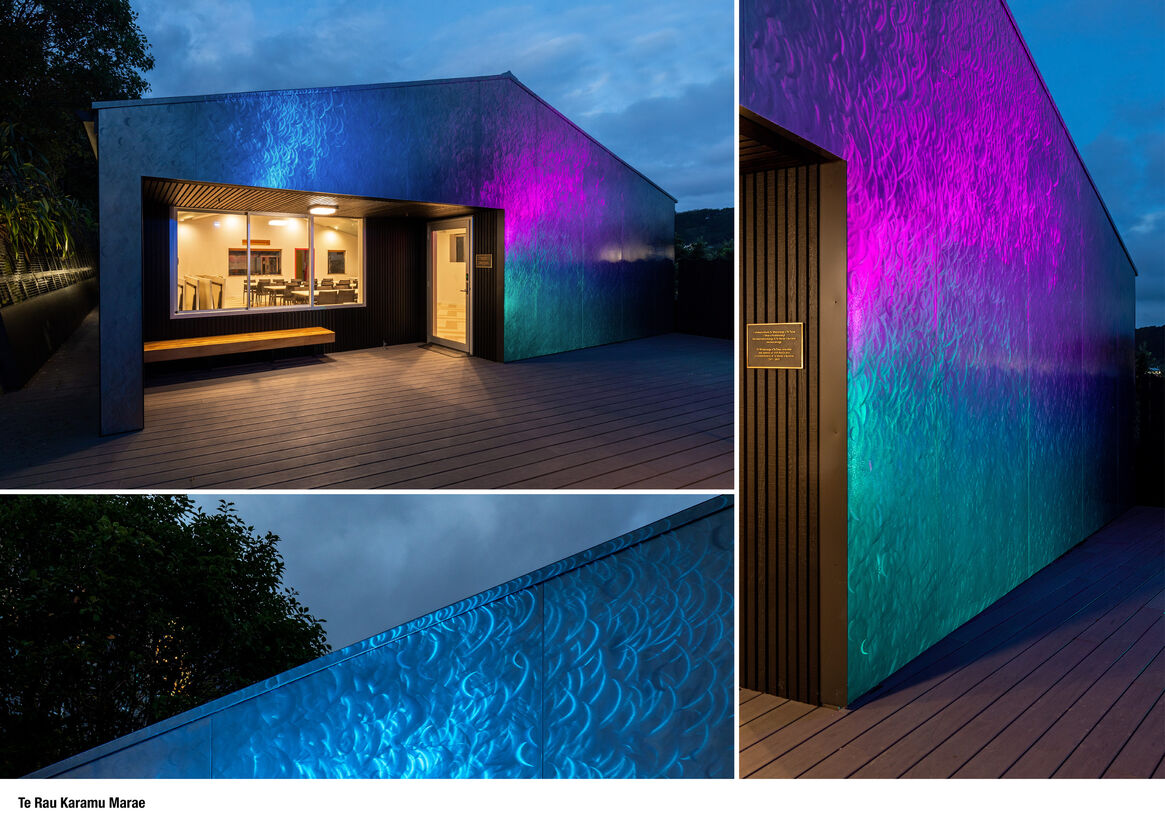
Description:
Te Rau Karamu Marae opened on Massey University’s Pukeahu Campus Whanganui-a-tara, March 2021.
The design of the wharenui ‘Te Whaioranga o Te Whaiao’ relates to a distinct zone within Te Waonui (the great forest) and the roles of atua such as Tāne Whakapiripiri and Hinewaonui in the creation of Te Rākau Tipua - the cosmic tree. This speaks of the connections to all things, that may be experienced by all of those who enter under its canopy and into its embrace.
The different aspects of the wharenui’s toi whakairo (artwork) speak to the forest’s relationships to birds, insects, waters, light as fire, sun, moon, stars, the cosmos, light as energy, genealogically linked to wāhine/tāne atua, bring us back to our sense of belonging here in Te Ao Mārama - the world of light.
This wharenui is the space of gathering, learning, of gaining knowledge then insight towards wisdom, that is, understood as light, enlightenment, the creation of life itself.
The wharenui interior lighting design process was itself a wānanga; carefully considered, prototyped and developed alongside the toi whakairo in order to enhance the overall sense of being enveloped in Te Waonui. Light is bounced off surface to illuminate the interior, light sources are concealed, the lighting atmosphere is warm and gentle.
The morning light through the east louvres and lowered LED adjustments give effect to an atmosphere that is responsive, intuitive, beneficial to new ideas.
The ascending sun, the louvres (often refracting light) cast prisms across the space; the skylights, and further LED adjustment, provides the effect of a glade, a discreet sanctuary.
Then the dynamic indoor/outdoor effect through opening of the eight doors onto the west courtyard, with afternoon sun rays, and raised LED levels within the wharenui, creates a seamless balance of natural and digital lighting effects, conducive to active learning, articulation and reflection.
At dusk, the interior illumination can be dramatic and enriching, for responsive communal sharing and insight. Then later, the lighting set to a faint luminosity to create that ‘cathedral effect’ for overnight guests reclining beneath the immersive canopy expanse.
The wharekai ‘Te Whaioranga o Te Taiao’ sits within the zone of Te Moananui (the great ocean). The front-facing exterior wall represents Tangaroa (the atua who created the potential of animation for all beings). The outdoor lighting programmed and positioned to activate the shimmering steel expanse in dynamic expression.
At the marae complex entry, exterior lighting across the totara gateway and wharenui are positioned to highlight and enhance the detailed carving reliefs and ceramic surfaces, enhancing the warmth of the timber, while also reinforcing height and scale. These illuminated structures and spaces are strongly atmospheric, communicating protection, stability and mana.
Most impactful is the embodied presence of light through ceremony. In pōwhiri, the warriors advance along the ātea, behind, the wharenui frontage glows with deep kokowai hues. In dawn karanga, the shimmering ocean colours emanate from the wharekai facade. In karakia, the warm hues within the wharenui engage the space, as wānanga commences.